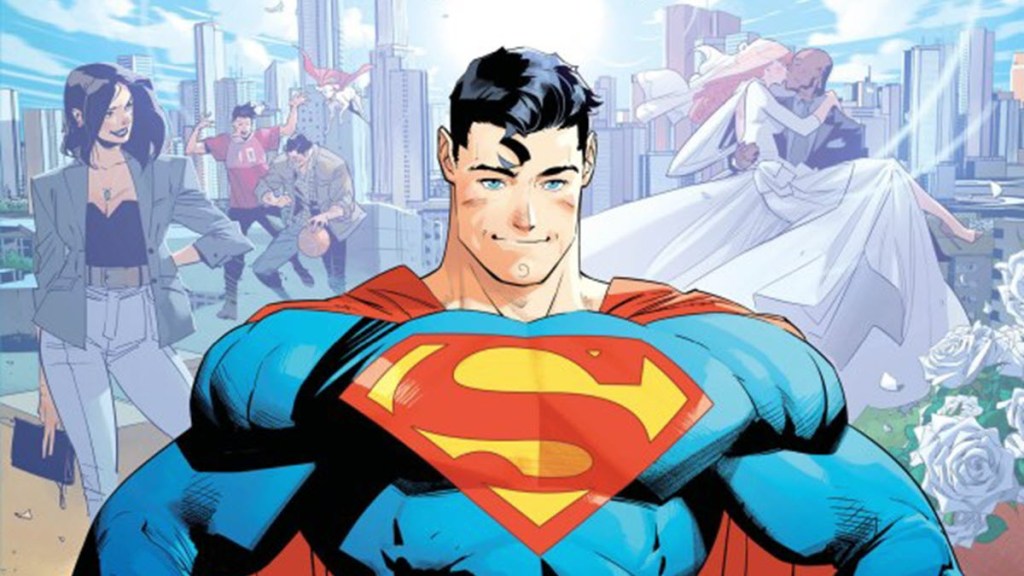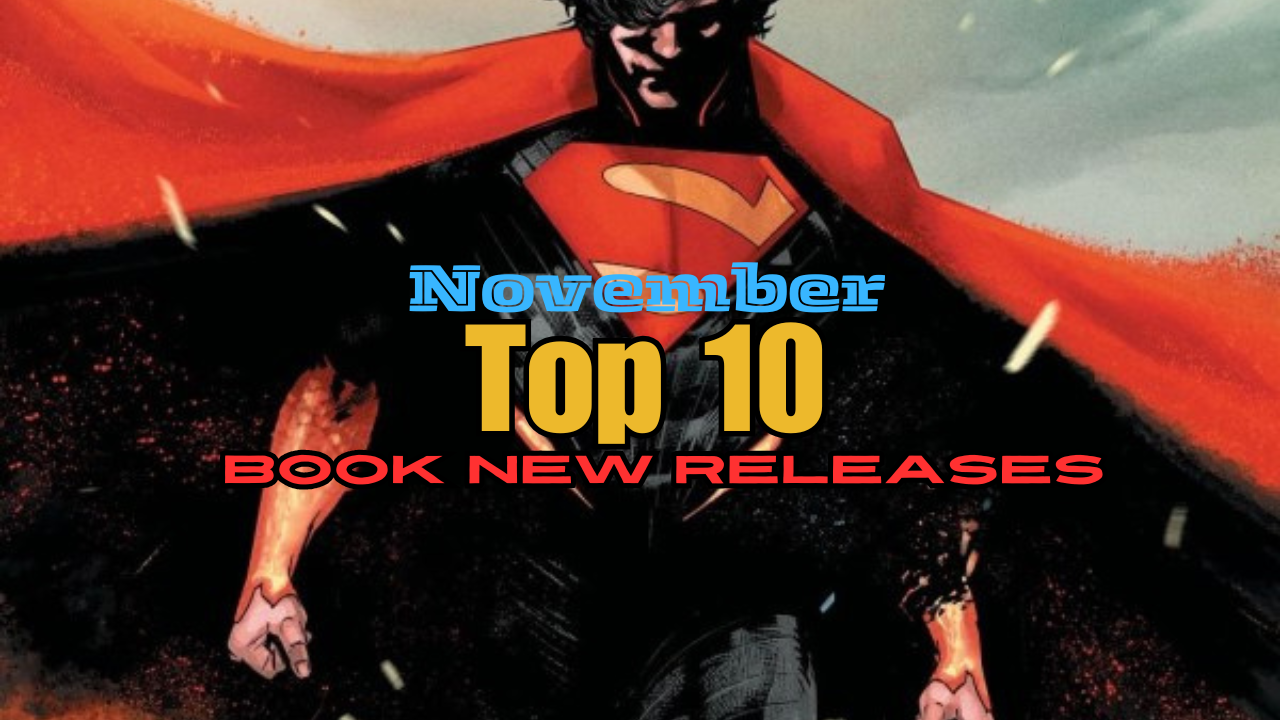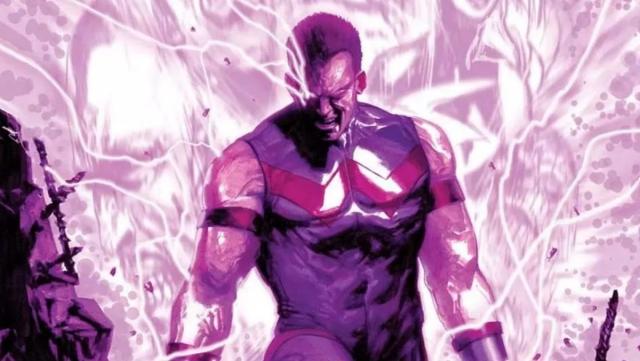The world of Marvel magic has changed drastically with Doctor Doom as the new Sorcerer Supreme, and Doom Academy #1 wastes no time in showing just how different things are under his rule. With Doctor Strange gone, Doom has taken over Strange Academy, folding it into his own Latverian institution and reshaping it in his own image. The result? A school that is both elite and oppressive, where education comes with an ironclad set of rules—and, perhaps, a lurking danger beneath the surface.
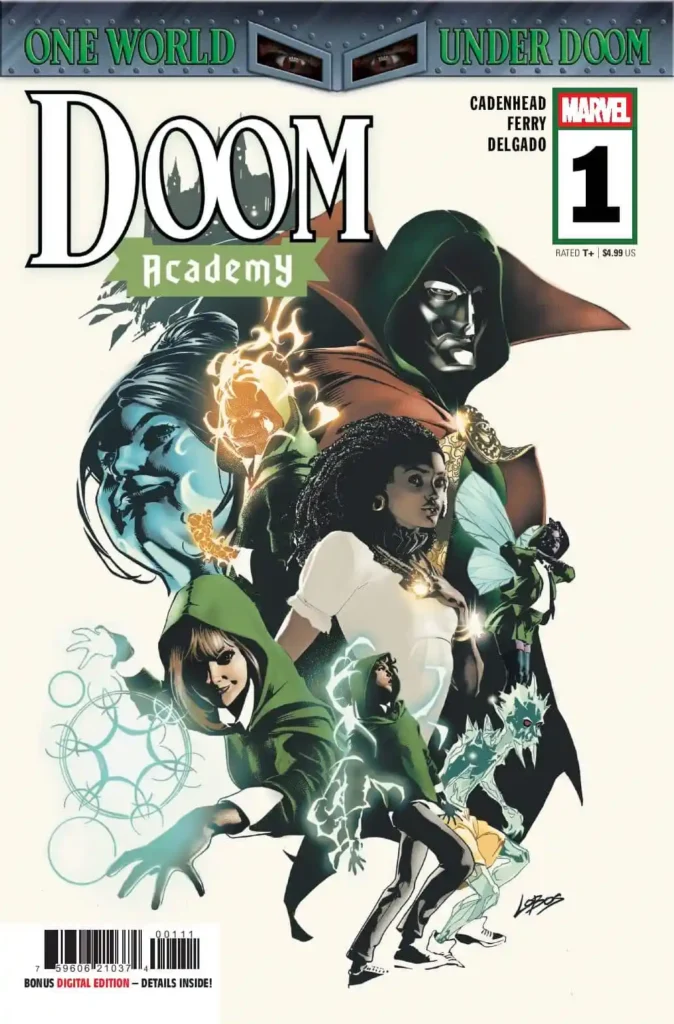
But does Doom Academy #1 manage to cast the right spell? Let’s break it down.
MacKenzie Cadenhead’s writing does a solid job setting up the new status quo for the students of Strange Academy as they enter their second year—now under the Doom Academy banner. Everything feels different, from the Latverian uniforms (green cloaks, naturally) to the strict new environment overseen by Doom’s regime.
At the center of it all is Zoe Laveau, a necromancer who immediately senses that something is wrong with the school in ways her classmates don’t. Her ability to perceive magical energies puts her at odds with her new surroundings, and when strange whispers begin calling to her in the night, it’s clear something sinister is brewing beneath Doom’s carefully constructed institution.
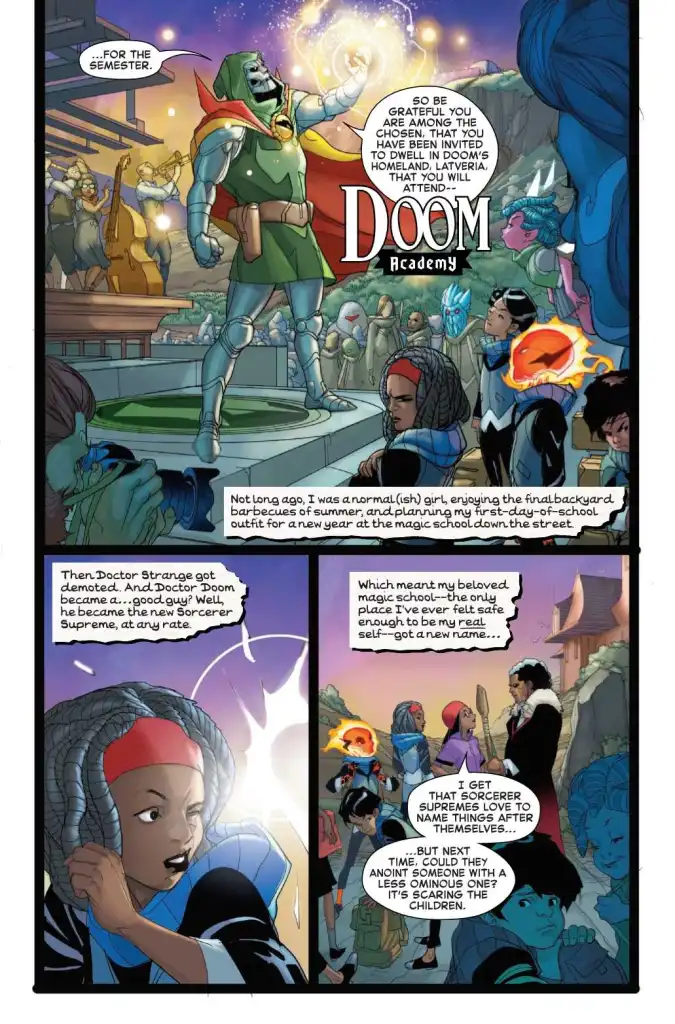
The setup is engaging, pulling the reader into a Hogwarts-meets-Latveria world where students must navigate both magic and dictatorship. The problem, however, is that Doom Academy #1 assumes readers are already familiar with Zoe and her fellow students from Strange Academy. Characters like Doyle Dormammu (son of Dormammu) and Shaylee Moonpeddle are referenced without much introduction, which might leave new readers feeling a bit lost.
That said, the central mystery is intriguing. What exactly is happening at Doom Academy? Is Doom’s education system hiding something darker than it appears? And how much of this is orchestrated by Doom himself? These questions keep the story engaging, even if some elements could have been better explained for first-time readers.
Where Doom Academy #1 truly shines is in its artwork. Pasqual Ferry’s illustrations bring an incredible sense of movement and energy to each panel, making the magic feel alive on the page. Character designs are striking, from the imposing figure of Doom to the varied, expressive students struggling to adapt to their new school life.
The use of color by Edgar Delgado enhances the atmosphere, balancing the rich green and gold tones of Latveria with the eerie blues and purples surrounding Zoe’s supernatural experiences. Even the smallest details, like the way spells glow or how shadows stretch across the academy’s grand halls, add to the book’s immersive quality.
Clayton Cowles’ lettering also deserves a mention, particularly in how the mysterious voices Zoe hears are portrayed. The text shifts subtly, giving the reader an eerie sense of whispered danger.
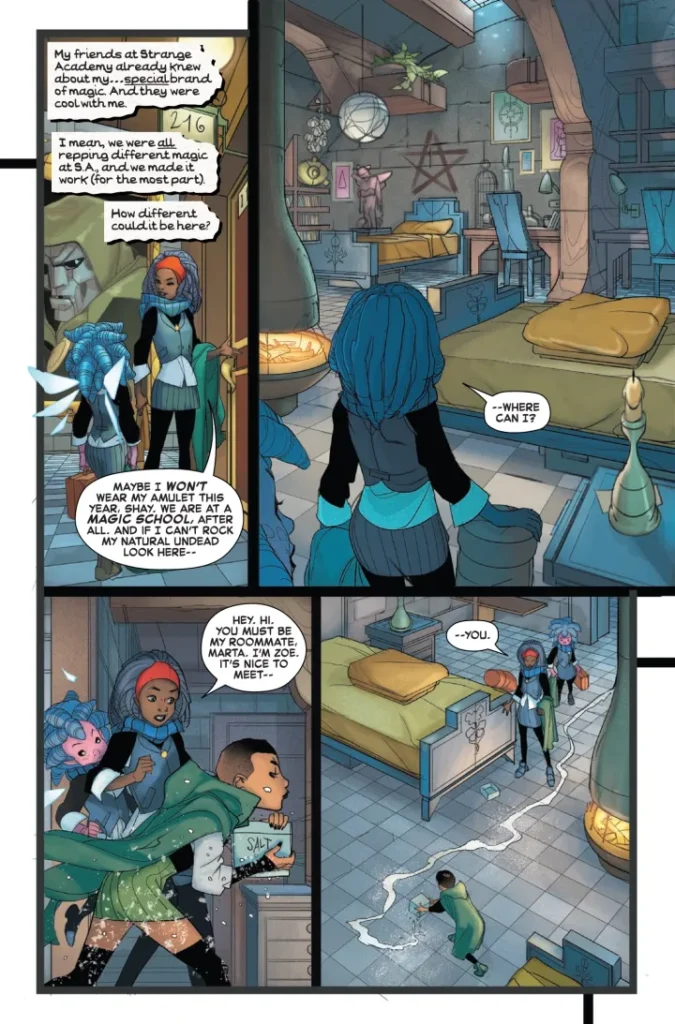
Simply put, Doom Academy #1 looks stunning. The world feels magical, yet grounded in the reality of a school run by Doom’s iron fist. It’s a visual delight that helps elevate the story, even when the writing leaves some gaps.
Doom Academy #1 delivers an intriguing premise, combining elements of magical academia with the authoritarian presence of Doctor Doom. Zoe Laveau’s journey as she uncovers the dark secrets of the school provides a strong central thread, and the gorgeous artwork makes every page feel immersive.
However, the book’s biggest flaw is its lack of accessibility for new readers. If you haven’t read Strange Academy, you may struggle to connect with some characters or understand their backgrounds.
That said, fans of magical school stories—or those who love seeing Doom in a position of power—will find plenty to enjoy here. If the series continues to flesh out its mysteries and provides more insight into the supporting cast, Doom Academy could shape up to be a fantastic addition to Marvel’s mystical corner.


